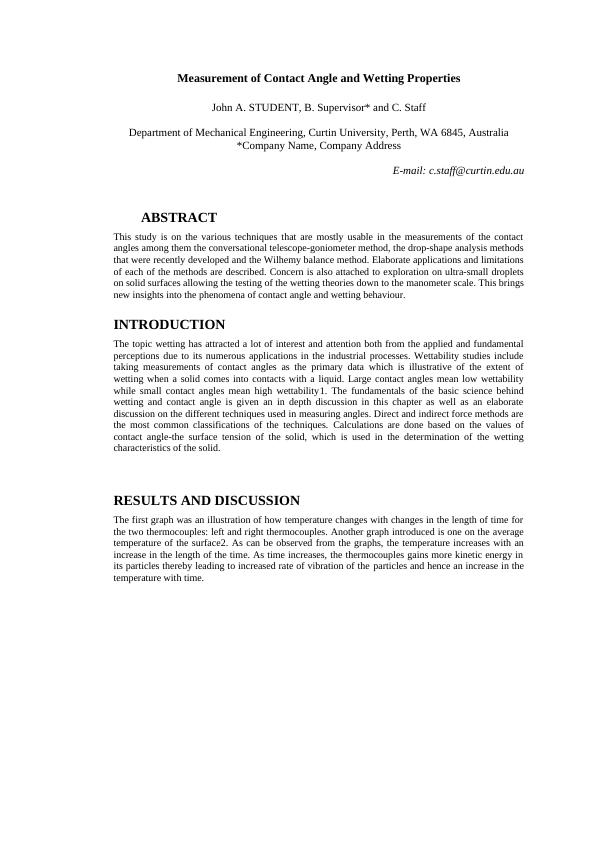Measurement of Contact Angle and Wetting Properties
Added on 2023-06-12
3 Pages710 Words275 Views
End of preview
Want to access all the pages? Upload your documents or become a member.
Contact Angle Measurement - PDF
|4
|614
|77
Contact Angle Measurement Using Imaging Method
|4
|869
|414
Measurement of Contact Angle in Sessile Drops: A Review of Methods
|19
|6204
|422
Optimization of Bar, Box, and Wrapper Size in Snack Bar Production Line
|4
|1104
|46

